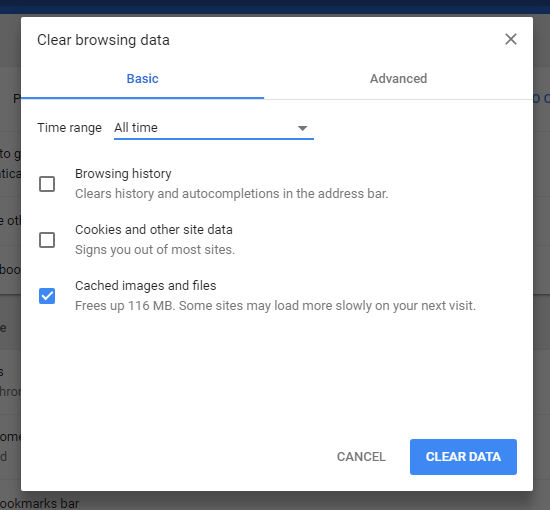

For example, the web server could block the proxy or its IP address and therefore reject the connection. However, there are various scenarios in which a proxy server can cause problems like the ERR_CONNECTION_REFUSED error message. In this way, they can filter communication and cache data, as well as keep the IP address of the user secret from the contacted web server. Particularly popular is the use of proxy servers, which act as an intermediary between the browser and websites. However, the increasingly important role security features have played in the development of websites does not prevent many users from using individual solutions to protect their own data. The protection of privacy on the internet has been an important issue for browser manufacturers and users for years. Please make sure that all listed file categories, as well as the option “ total time” (under “period”) are selected, otherwise Chrome will not empty the entire cache, just certain files and the cache from the last couple of hours or days. In both cases, you can go directly to the browser cache menu, where you can remove the cache files with a single click on the “ DELETE DATA” button.
Access the address chrome://settings/clearBrowserData on the Chrome address line. Click on the three-point symbol in the browser’s menu bar and then select “more tools” and click on “delete browser data”. The menu needed to achieve this can be accessed in two ways: A possible solution to fix the ERR_CONNECTION_REFUSED error message in Chrome is to clear the Google Chrome’s browser cache. However, this can become a problem if these cache states are outdated and therefore no longer match the current version of the contacted website. These include the history of visited websites, cookies, or static content like images or log-in data, which are recorded in the cache in order to be able to load the corresponding pages more quickly the next time they are accessed. My guess is that there is some fallback logic in MacOS where it uses a public DNS server after the local DNS server fails to respond.Īll I had to do is set DNS servers to Google's Public DNS IP addresses.Like all internet browsers, Chrome stores a lot of information in the program’s cache. I don't know why the Internet even worked at all. It turned out that my Mac had the DNS server set to a non-existent local IP address, something like 10.0.0.1. But overall the internet was working just fine and no other device, including my work MacBook, had that problem. Using tools like brew and pip was a nightmare as it took forever before they started downloads. Chrome would show “Resolving host…” for a few seconds before loading websites and it was exasperating. My new shiny MacBook Pro had an issue with resolving host names. How to fix Chrome "Resolving host" issue on Mac





 0 kommentar(er)
0 kommentar(er)
